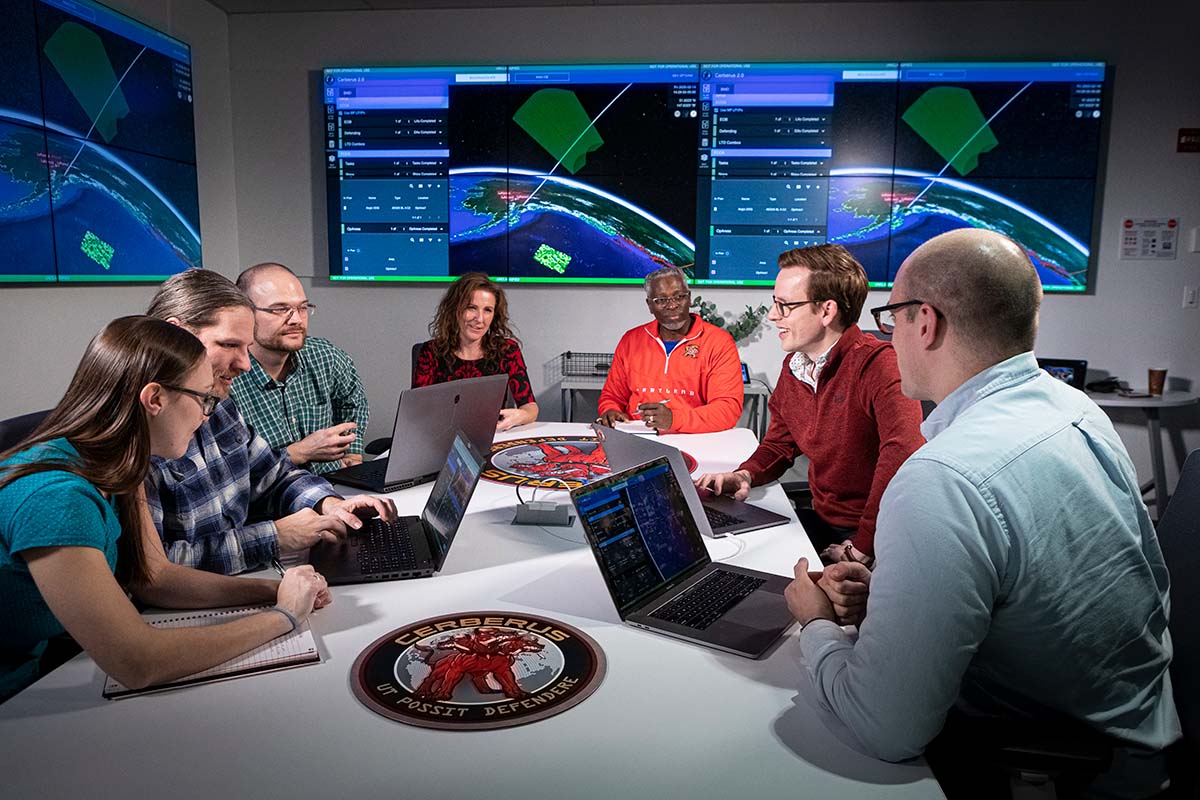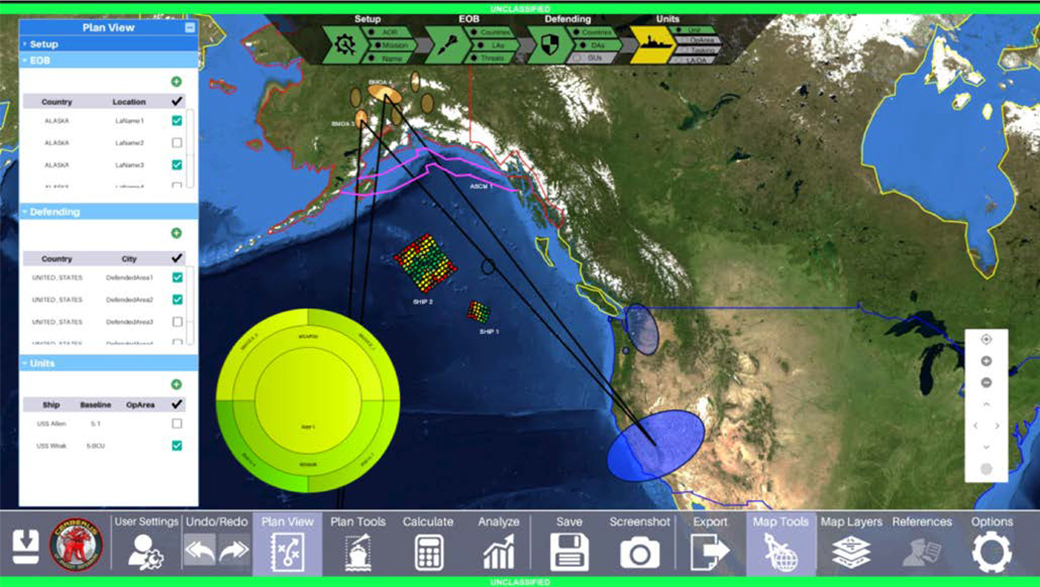News
Johns Hopkins APL Flexes Rapid Prototyping Muscles, Impacts Navy
The story of how the Johns Hopkins Applied Physics Laboratory (APL) turned a three-year air and missile defense prototyping plan into a working version in just 12 months is a tale of collaboration, innovation, and intelligent risk-taking.
In late 2016, APL received a Missile Defense Agency (MDA) request to develop an advanced prototype of the next-generation mission planning tool, which MDA named Cerberus. The challenge was to advance the state of the art in Integrated Air and Missile Defense (IAMD) force-level mission planning, long term, and fill gaps in ballistic missile defense planning identified by warfighters, near term.
The Cerberus project team laid out a three-year plan to design, build, field and iterate an advanced prototype. That plan included one field installation in two years, but just 12 months later, APL demonstrated an initial working version.
Four Navy admirals witnessed that demonstration and the direction was given to start fielding the Cerberus prototype as soon as possible.
“Our sponsor was willing to take risks and trusted us to complete the task,” said Travis Heslop, Cerberus project manager. “We are a solution-oriented team that understands the current challenges and looks to find solutions that will close some of the largest gaps. That’s how we are successful.”
The Cerberus prototype provides the warfighter with ship placement and combat system configuration options to successfully carry out planning for the ballistic missile defense mission.
“The IAMD planning domain is extremely complex. Warfighters need planning tools that are easy to use, quick to show results and able to give them detailed insight into the performance estimates,” explained Michelle Bowser, the Cerberus integration lead. “Cerberus is just beginning to address these challenges. With preloaded databases of intel-assessed plan components, algorithms and hardware that speed up the calculations, and progressive displays of results that facilitate quick analysis, Cerberus has already started to make a big impact.”



